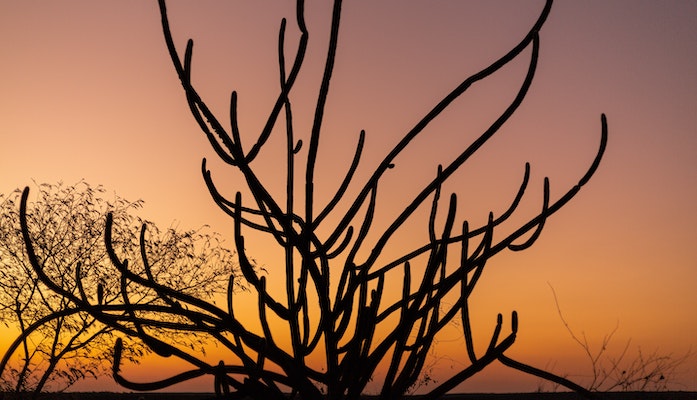Article: Healing and Awakening with Buddhism and Shamanism
By Isa Gucciardi, Ph.D.
Editors’ Note: An interview with Isa Gucciardi, Ph.D. by Gigi Falk, Columbia University Department of Clinical Psychology and Spirituality
Gigi: I’ve been exploring Buddhism and plant medicine and psychedelics for about six years now. One area that I find really absent in a lot of the conversations on psychedelics and spirituality is indigenous shamanism, and it’s hard to find people who know much about that, and also have some kind of Buddhist framework. That’s why I was so excited to hear about your work and listen to some of your talks.
The main question I’m working with in this book is how can we engage with plant medicines as tools or technologies to support awakening? How can we understand the psychedelic experience and also the outputs of psychedelics through a lens that is with the intention of awakening? When I heard about Depth Hypnosis and your work, I thought it would be amazing to talk to you and hear your thoughts on this. You’ve spoken about the catalytic power of shamanic practice and how you feel that there’s potential in that to be harnessed by Dharma practitioners in service of Awakening. This seems to be the focus of your work with Depth Hypnosis, so maybe we could start there.
Isa: I think your question distills to: ‘How do we approach the plants with the intention for awakening?’
It is important to remember that many plants can provide healing and assist with the movement toward wholeness. They heal, they nourish, they restore, they inspire. Awakening, then, could be said to be the intentionality of plants. This is especially true of the plants that are used in ceremony with the intention for transformation and healing. When we’re talking about plants, I think there’s a certain category of plants that have a particular focus on awakening. Some of the most powerful plants in this regard are the plants that make up ayahuasca, psilocybin-containing mushrooms, and some of the mescaline-containing cactuses like San Pedro and peyote. I think that they do have their own intelligence and they do have their own focus. The focus on awakening and healing is not exclusive to these plants, but these are some of the most widely researched in this regard.
I do want to distinguish these plants from all the different psychoactive plants that people are ingesting these days, and their biochemical facsimiles. I think that different plants have different kinds of intention. Different groups of plants have different types of intentionality. As I’ve mentioned, I feel these plants do have that intentionality toward assisting with the awakening of the human spirit. So, then it’s really a matter of human beings having that intentionality and being willing to align themselves with the intention the plants are holding. To do this, humans have to be willing to approach the plants with humility and respect. This attitude helps people open and receive the teachings of the plants.
In reference to your question about tools for awakening, I don’t really like the idea of referring to plants as a tool. I know you’re trying to get at a particular understanding, and I know you don’t mean any disrespect. But there’s an attitude of consumerism in that term, which is unfortunately too common in the way that many people approach working with plants, psychotropic and otherwise. I’m sure that you’ve run into that attitude where people just think about consuming the plants without thinking about the field of intelligence they are being granted access to. I think we must step away from that kind of approach and just allow ourselves to open to the intentionality of the plants and try to align our own intentionality with their spirit of awakening. The spirit of awakening is a term from Buddhism, and I think it applies here. To access the spirit of awakening, we can ask, “How do we align our intention properly in working with plants?”
Gigi: I haven’t really heard anyone talk about how these plants are holding an intention of awakening. You know, often the language I hear is around healing, that these are healing plants, healing spirits.
Isa: The truth is that healing IS the process of awakening. You cannot awaken if you cannot heal. In Buddhism, we don’t talk about healing in this way. In shamanism, we do talk about healing. In shamanism, we don’t talk about awakening. In Buddhism, we talk about awakening. When we realize that these two processes are actually the same, we find the bridge that brings both practices together.
Gigi: I’m curious how you would describe what gives you the sense that these plants have the intention of awakening. Awakening itself is a very abstract concept, at least to me, and even intention can feel kind of abstract as a term. I’m just curious if we can concretize this with an example or story or anything that comes to mind that can help me kind of wrap my head around it a little more.
Isa: Well, if you’ve ever ingested one of these plants, you know immediately what they’re up to. Right there. They’re interested in revealing aspects of your experience that would be helpful for you in terms of both awakening and healing. So, it really is a matter of experience to be working with the plants. You can experience them and receive teachings either by ingesting them or by sitting with them and becoming part of their magnetic field through meditation. Because of the way they focus your attention, they will make their intention clear. That’s how you perceive their intention. If you understand it from an experiential point of view, the intention immediately steps out of the abstract and becomes more concrete.
If you’re looking for stories, I’ve worked with a lot of people who have ingested plants but cannot understand their experience. If you sit down with a person and ask them to tell their story of their experience of the plant, and help them break down what they have perceived, the way the plant is highlighting their own internal process becomes more evident. Frequently, it becomes evident that the plant is seeking to help highlight where people are out of alignment with their best and highest expression or potential. This can be difficult to understand when you don’t understand how you are not in alignment with that potential. The experience with the plant can just feel uncomfortable or confusing in that case. The plant generally seeks to help people examine the ways in which that lack of alignment has occurred. All of this becomes very evident when people recount their experience with the focus of integrating the plant’s intention.
Everyone is on a different place on the path of awakening. No two experiences are exactly alike. But the plants work in very similar ways with different people. The thrust or the intentionality of the plant becomes evident in the way that it is manifesting and changing the person’s focus and understanding of themselves.
Gigi: Are you saying that these plants are working with the intention of our highest freedom and liberation by revealing to us our areas that have been hurt, that are twisted up?
Isa: I think that’s one way you can say it. I did say your highest potential or expression, but I think they’re just trying to get us to heal and wake up. And they are willing to do whatever it takes to help in that regard. When we heal and wake up, we can more easily step into our highest potential.
Gigi: What’s the avenue that that seems to be happening through? Especially with Ayahuasca, it seems to be very shadowy, at least certainly it is for me, and it’s really highlighting these areas where I’m blocking my freedom. It sounds like you’re saying something similar, but I just wanted to clarify if that’s what you feel is happening, or if there are other avenues through which you think these plants are working towards that intention of awakening with an individual.
Isa: Well, I think your experience is one part of the path. But you may have also had experiences where you are shown places where you are more expanded. I call the first experience ‘going in the front door’ and the second, ‘going in the back door.’
Going in the front door is where the plant helps you work through the obstacles to your potential or awakening by bringing them forward. As you follow the plant and you allow the plants to unwind those obstacles, a greater light of awareness begins to dawn.
Going in the back door is when the plant presents you with an experience of yourself that is shining, unobscured, and bright. In this case, the task is just to be able to hang on to the expansion. They are backlighting your experience and showing you the light within you. Then once you have that experience of light or experience of brightness or brilliance, you can see from there where the obstacles are and then you can work with them from that point of view.
Gigi: I really love that framework. How much is being cleared away in the ceremony itself? How much work happens in ceremony versus integration?
Isa: I think that’s entirely individual, but I don’t think that the plants stop working with the ceremony. One of the big tasks in integration is to have the person who has taken the plant medicine recognize and realize that the plants are still working after the ceremony is over. Most people don’t realize this. A big part of the equation is helping them understand that that is the case.
Once you’ve ingested plants, they are always working with you. Part of the process of integration becomes a way of recognizing this and learning how to literally integrate the fact that you are being guided in this way.
One of the ways we do that, in our work at the Sacred Stream, is through the Shamanic Journey. This is where you begin to establish a relationship with a plant whose essence you may have ingested, and then you begin to work with the spirit of the plant through the Shamanic Journey. When you do this, you have access to that plant’s intelligence without necessarily ingesting it again and again. You can work with the intelligence of the plant to ask questions and ask for clarification about things that may have happened in the ceremony, or experience that may have unfolded as a result of the ceremony.
Gigi: In my experience that feels very true. With Ayahuasca it felt like certain sensitivities were opened that are just open now. I’m curious if you feel that that is particularly true with Ayahuasca or if the other plants you were mentioning earlier, like mushrooms, if you would describe those the same way.
Isa: I would.
Gigi: I spent a lot of time on meditation retreats and with Buddhist teachers. The medicine world and indigenous culture is much newer to me and one big question I have is, it doesn’t seem like awakening is the focus of medicine work in indigenous cultures. I’m curious how you see an intention of liberation show up in indigenous culture or ceremony.
Isa: You’re right, in shamanism the idea of enlightenment is not really something that is spoken about in the same way that it’s spoken about in Buddhist practice. But there is a practice of continually deepening one’s alignment with the wisdom of the earth. This is the primary focus of many of the shamanic initiatory paths.
Remember, there are lots of different types of shamanic practice. There’s a lot of practice that is not necessarily positively motivated or intended and is directed more by human will than aligned with a more neutral connection with the universal power of the earth. I’m not talking about that type of shamanic practice right now. I’m talking about shamanic practice that is in a proper or positively intentioned alignment with the powers of the earth, with the unseen powers in the rocks and the trees and other natural forms. I am talking about practices that work with those unseen powers to bring harmony and order. We are talking about a practice that is in alignment with the intelligence of the earth and focuses on an ever-deepening understanding of that power, especially on the elemental and subtle levels of experience that the earth provides. This effort becomes its own type of enlightenment experience. It’s the alignment with the deepest powers and knowing of the earth that brings that same kind of ordering, that same kind of expansion, that same type of deepening, that one would have in working essentially with the ground luminosity in Buddhism.
In shamanism they don’t talk about the effort to know the earth’s wisdom as fully as possible as an awakening or an enlightenment experience, but it is. I think Buddhism can learn from working toward an ‘enlightenment’ experience by studying and aligning with the powers of the earth. This does happen in some schools of tantra, but it is not widespread. One of the things that can happen in Buddhist practice is that the practice can become very ‘heady.’ People can get lost chasing the light in the effort to arrive at an enlightenment experience this way. The focus can become, ‘who can meditate the longest?’ and ‘who can hold the pose best?’ Also, practitioners can get lost in debates with the purported purpose of refining definitions about the nature of reality that are completely irrelevant to being able to actually understand and heal oneself.
When this happens, we must return to the earth to restore our grounding. In his enlightenment experience Buddha recognized this. When Mara, the god of death and destruction tried to disrupt his quest for healing and understanding, he remained unfazed. Why? Because he knew the power that he was connecting to as he was moving toward enlightenment was the power of the earth. He told Mara, “You cannot defeat me, because my power is greater than yours. It is the power of the earth.”
I think we all must remember this. Buddhist practice that becomes too heady benefits from the grounding within the deep feminine of the earth. And I think that shamanic practice benefits from the clarity and discipline of Buddhism. Yes, over-thinking can go off the rails at times, but in balanced practice, discipline in conceptualization is invaluable in helping the student become more organized, more proactive, and more discerning – and more able to move beyond the conceptual mind in a coherent way. I think this is a very important aspect of Buddhist practice. There can be a lack of discernment and a lack of organization in some forms of shamanic practice because there is not always an emphasis on discipline, particularly the discipline of the mind.
Gigi: I guess you could say that these two wisdom traditions support each other.
Isa: Yes, this is true. The problem is that practitioners of the two traditions don’t always talk to each other, so it is not always evident how complimentary their practices can be. I also think it is important to bring them into engagement with each other to see how they complement one another. You can see how complimentary they are in the meeting place Depth Hypnosis provides. In Depth Hypnosis, you get beyond all labels. It’s beyond Buddhism, it’s beyond shamanism. It’s focusing only on the places where people are having trouble healing, and helping people heal from trauma. A Native American person, a white person, a black person, a Latino person, a queer person, a trans person, they may all have trauma, right? They experience the trauma through their own particular cultural lens, but trauma is trauma, and healing trauma is healing trauma. Once you get into the business of healing, once you get into the business of pain, once you get into the business of transforming wounding, it’s all about the movement toward coherency in whichever way the person needs. In Depth Hypnosis, you can bring all of the benefits of shamanic healing practice and all of the benefits of disciplined Buddhist practice into the clinical environment so that people can heal and evolve into a more enlightened way of being.
Gigi: It sounds like the model for awakening is through healing trauma. Which feels so different than the model of awakening that I’ve experienced, in Zen monasteries, for example. It’s awakening through stilling the mind.
Isa: That’s one piece of it. Stilling the mind is important, but you can get your mind still and also be sitting on top of a mountain of trauma. So, you have one layer of your being that’s ordered, but there can be other levels that are not – especially those that lie outside the reach of a practice focused solely on the mind – even a practice that purports to be going beyond the mind often winds up in an ungrounded almost nihilistic place without the grounding of practices which focus on the material, the earth. That’s one of the reasons why you have problems with leaders. There are so many problems in Buddhist communities of late, where the leaders could not hold integrity. They couldn’t hold integrity because they hadn’t done the deeper work that is often held in the body, in the parts of the self that need the intelligence of the earth to heal. Their practice was layered on top of layers of unresolved issues. To be fair, you see many shamanic healers and leaders also falling out of integrity. And often this is because they are not disciplined, they are not organized in their conceptual thinking.
Gigi: I’m zooming out and looking at how my main question has been around how plant medicine supports awakening and right now I’m thinking, what are all the avenues that support awakening, with our seated meditation practice being one of them, with precepts being another one, with trauma work being another. What are all the different avenues?
Isa: There are so many paths to awakening. You can draw something from all of it. In Depth Hypnosis, the path to awakening is through the symptoms that people come for help with. When I am teaching, I always say that pain is grounding. Wounding is grounding. If you stay close to the pain and if you stay close to the wounding, you’re not going to get lost in some kind of weekend-warrior misunderstanding about what it is to work with plants, and you’re not going to get lost in some chase into a non-dual meditative state that you can’t hold.
When you start with the places that are disordered and work in this way, the disorder will fall away or unwind. Then, from a Buddhist perspective, one’s Buddha Nature begins to emerge more fully. From a shamanic point of view, one’s ability to align more fully with the coherence of the earth begins to emerge. In some ways you could say that shamanic practice and Buddhist practice are two vehicles of transport into two different fields of transformative coherence that can ultimately merge into one field of coherence within the person who seeks healing transformation or enlightenment. The field of coherence in Buddhism is the ground luminosity of which Buddha Nature is the personalized expression. In Shamanism, it is the deep, unwavering, awe-filled appreciation and understanding of the power of the earth that is the field of coherence. I highly recommend the attainment and perception of both. But you have to start with the places that cannot attain and perceive that coherence in order to help people arrive there. The path to awakening and healing is through the places that are unhealed and unaware.
ENJOYING THE STREAM OF CONSCIOUSNESS BLOG? SIGN UP FOR FREE UPDATES!



